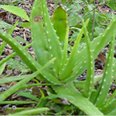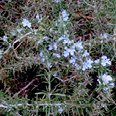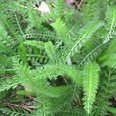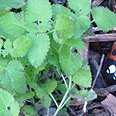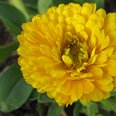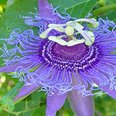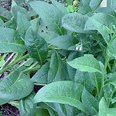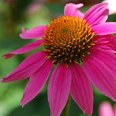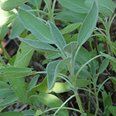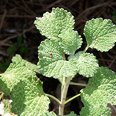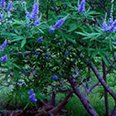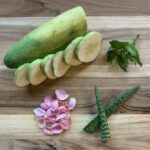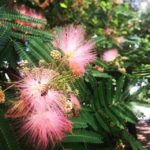We all need to take good care of our heart, our center, our organ that pumps blood, oxygen, nutrients and life throughout our body. There are many herbs that are “heart-healthy” and I will mention just a few of them is this Blog.
Cayenne Pepper, Capsicum annum, is a strong and easily grown herb that has a profound effect on the heart. You can grow Cayenne in the summertime here in Central Texas where you will be delighted to harvest these beautiful red peppers over the summer. I have 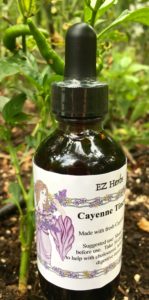 recently made a new Cayenne Tincture and it is available for sale here. Cayenne is quite helpful in lowering blood cholesterol, assists with high blood pressure and can even delay or stop a heart attack when taken immediately as any pains begin.
recently made a new Cayenne Tincture and it is available for sale here. Cayenne is quite helpful in lowering blood cholesterol, assists with high blood pressure and can even delay or stop a heart attack when taken immediately as any pains begin.
Did you know that Roses, Rosa, spp. are not only beautiful flowers, but roses are also herbs. Roses are large or small shrubs, moderate to vigorous climbers and appear in numerous colors, scents and shapes. I love Antique Roses as they grow the best in our environment, require less care than the Hybrid roses, are more disease resistant and produce more fragrance and better, more nutritious rose hips. 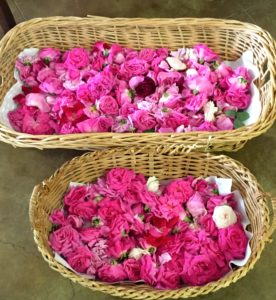 Rose petals are velvety soft and high in mucilage. Roses are also “cooling” for fevers, and are used as an astringent for infantile or childhood diarrhea. Not only a symbol of love, friendship and passion, but growing roses and using the rose flowers, leaves and hips can be rewarding for use in cosmetics and medicine. Rose Tincture is an excellent remedy for a broken heart and specific for treating grief. It truly OPENS the HEART and allows more love inside. Cleopatra had her servants gather rose petals to scatter in her boudoir to entice the affections of her chosen one. Legends have it the couple would stand knee deep within the deep fragrance of the blossoms, swooning from the erotic aroma. Try some incredible Rose Tincture today.
Rose petals are velvety soft and high in mucilage. Roses are also “cooling” for fevers, and are used as an astringent for infantile or childhood diarrhea. Not only a symbol of love, friendship and passion, but growing roses and using the rose flowers, leaves and hips can be rewarding for use in cosmetics and medicine. Rose Tincture is an excellent remedy for a broken heart and specific for treating grief. It truly OPENS the HEART and allows more love inside. Cleopatra had her servants gather rose petals to scatter in her boudoir to entice the affections of her chosen one. Legends have it the couple would stand knee deep within the deep fragrance of the blossoms, swooning from the erotic aroma. Try some incredible Rose Tincture today.
Another “Heart” herb is Hawthorn, Crataegus oxyacantha, a large shrub or tree 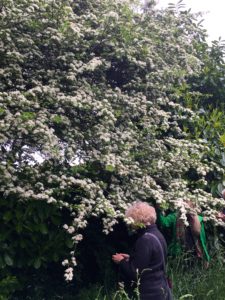 that grows in many areas of the world. Hawthorn is a cardiac tonic and can be used both preventively and for some acute situations. I take a Hawthorn blend of the flowers, leaves and berries and use it as a preventative since both of my parents have had heart disease. I was delighted to see dozens and dozens of Hawthorne trees in bloom on my recent Plant Lover’s Journey to Ireland. The Irish said they haven’t seen a year like this in a long time. The Irish are not the only lucky ones!! You can drink a tea from the dried berries or take the blend as a tincture. Hawthorn is known to normalize blood pressure, it is strengthening to the heart muscles weakened by age and helpful for nervous heart problems and irregular heart beat. Hawthorn has been used for many, many years as a safe, heart tonic and does not have any known contra-indications for use with allopathic medicines.
that grows in many areas of the world. Hawthorn is a cardiac tonic and can be used both preventively and for some acute situations. I take a Hawthorn blend of the flowers, leaves and berries and use it as a preventative since both of my parents have had heart disease. I was delighted to see dozens and dozens of Hawthorne trees in bloom on my recent Plant Lover’s Journey to Ireland. The Irish said they haven’t seen a year like this in a long time. The Irish are not the only lucky ones!! You can drink a tea from the dried berries or take the blend as a tincture. Hawthorn is known to normalize blood pressure, it is strengthening to the heart muscles weakened by age and helpful for nervous heart problems and irregular heart beat. Hawthorn has been used for many, many years as a safe, heart tonic and does not have any known contra-indications for use with allopathic medicines.
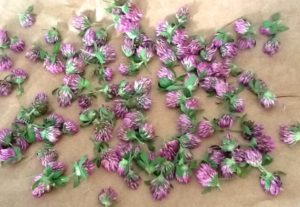 Red Clover, Trifolium pratense, is another effective herb that benefits the heart. It can particularly help with the strengthening of menopausal heart muscle. One important contra-indication to using Red Clover is that it has a blood thinning constituient, Coumarin, so if you are on a blood thinning medication like Coumadin, you probably should avoid using it. Red Clover also has benefits for the lungs, is used in cancer therapy and is a great herb for the female reproductive system.
Red Clover, Trifolium pratense, is another effective herb that benefits the heart. It can particularly help with the strengthening of menopausal heart muscle. One important contra-indication to using Red Clover is that it has a blood thinning constituient, Coumarin, so if you are on a blood thinning medication like Coumadin, you probably should avoid using it. Red Clover also has benefits for the lungs, is used in cancer therapy and is a great herb for the female reproductive system.
Also beneficial to the female reproductive system is one of my favorites, Motherwort, Leonaurus cardiaca. This lovely, purple-flowering herb grows very easily in our central Texas gardens and will reseed itself readily, so once you have it, you have it. Like Hawthorn, Motherwort has a tonic effect on the heart. It is used to promote circulation, for rapid heartbeat, arteriosclerosis and helps to dissolve blood clots. Motherwort also acts as a sedative for stress following childbirth and at menopause. Because of Motherwort’s ability to stimulate uterine contractions, it should not be used during pregnancy. It is, however, used during actual labor to facilitate childbirth. As the famous 17th Century Herbalist, Nicholas Culpepper wrote “Motherwort drives the melancholy vapors from the heart”. 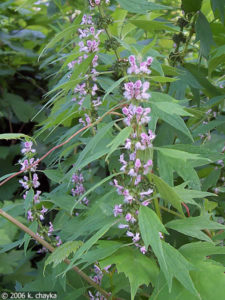 Used as a sedative and heart tonic, Motherwort can ease depression and calm the nervous system.
Used as a sedative and heart tonic, Motherwort can ease depression and calm the nervous system.
There are many ways to stay heart-healthy. Using herbs is just one. I believe it is important to eat a healthy diet, to exercise regularly, to maintain good relationships and to do something everyday for you, someone else and something creative. Your heart will stay open, vibrant and strong.
With Warm Green Blessings,
Ellen

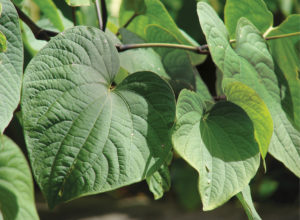 I just received a package of freshly harvested Kava kava Root, Piper methysticum, from my source in Hawaii so I am inspired to write about it. He digs it up from the ground and quickly sends it along with some dirt still on it so it is FRESH! I am so lucky to be able to process and sell this fresh Kava Root as a tincture. I call Kava my ‘Big Guns” as it is probably the strongest herbal medicine I make.
I just received a package of freshly harvested Kava kava Root, Piper methysticum, from my source in Hawaii so I am inspired to write about it. He digs it up from the ground and quickly sends it along with some dirt still on it so it is FRESH! I am so lucky to be able to process and sell this fresh Kava Root as a tincture. I call Kava my ‘Big Guns” as it is probably the strongest herbal medicine I make.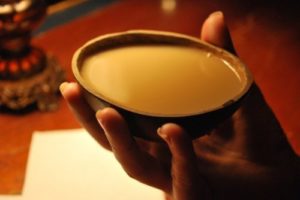 the Polynesian Islands where it grows naturally. It is a ceremonial herb that is usually made in to a tea and shared with others in a community. Kava kava is quite relaxing as it works on the nervous system to alleviate anxiety, ease tension, reduce the frequency of insomnia, and helps to create a euphoric mood. Kava kava is also a strong muscle relaxer. If you have neck, shoulder or back tension, using Kava may relax your muscles and help initiate the healing process.
the Polynesian Islands where it grows naturally. It is a ceremonial herb that is usually made in to a tea and shared with others in a community. Kava kava is quite relaxing as it works on the nervous system to alleviate anxiety, ease tension, reduce the frequency of insomnia, and helps to create a euphoric mood. Kava kava is also a strong muscle relaxer. If you have neck, shoulder or back tension, using Kava may relax your muscles and help initiate the healing process.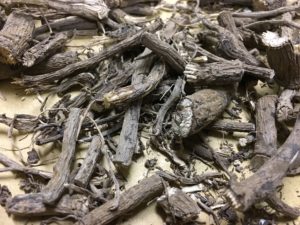 Years ago Kava was taken off the market for a period of time, as some considered it unsafe. Kava is strong medicine and should be used wisely but it is safe when used occasionally for specific situations. The problem was that some students in California overused it to relax and some liver issues developed. This has never been proven that the liver problems were from the Kava. Needless to say it is always wise to use any herb, or drug, or food, moderately and only when needed.
Years ago Kava was taken off the market for a period of time, as some considered it unsafe. Kava is strong medicine and should be used wisely but it is safe when used occasionally for specific situations. The problem was that some students in California overused it to relax and some liver issues developed. This has never been proven that the liver problems were from the Kava. Needless to say it is always wise to use any herb, or drug, or food, moderately and only when needed.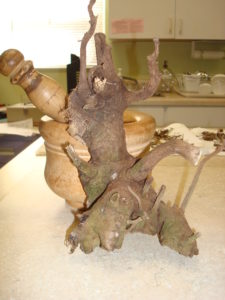
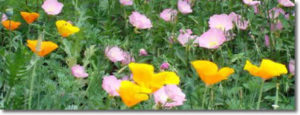
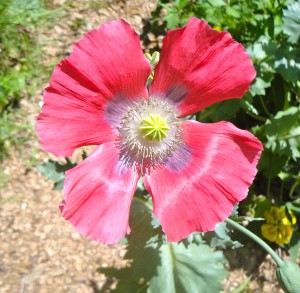 and California poppies, Eschscholzia californica which I will discuss today.
and California poppies, Eschscholzia californica which I will discuss today.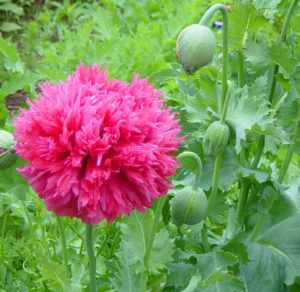 The Dorothy poppy is a full double or triple petal, a gorgeous rosy pink and the most incredible, sweet, luscious flower. After some time the pom pom rosy poppy will revert back to a flat flower. How interesting!!! The Oriental poppies including the red, white,
The Dorothy poppy is a full double or triple petal, a gorgeous rosy pink and the most incredible, sweet, luscious flower. After some time the pom pom rosy poppy will revert back to a flat flower. How interesting!!! The Oriental poppies including the red, white, 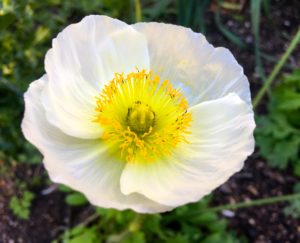 lavender and pink all contain a number of alkaloids with sedative and hypnotic properties. The latex, which exudes from the stem, is a narcotic and should be avoided.
lavender and pink all contain a number of alkaloids with sedative and hypnotic properties. The latex, which exudes from the stem, is a narcotic and should be avoided.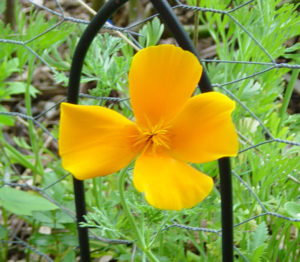 The lovely little orange California poppy, Eschscholzia californica, is another perennial poppy that grows well here and the entire plant can be used as a sedative. This poppy does contain flavone glycocides but is not considered narcotic. The California poppy can be made into a tincture and used to relieve pain, as a sedative for insomnia, to help with anxiety, to allay diarrhea and to inhibit the cough reflex.
The lovely little orange California poppy, Eschscholzia californica, is another perennial poppy that grows well here and the entire plant can be used as a sedative. This poppy does contain flavone glycocides but is not considered narcotic. The California poppy can be made into a tincture and used to relieve pain, as a sedative for insomnia, to help with anxiety, to allay diarrhea and to inhibit the cough reflex.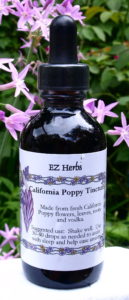
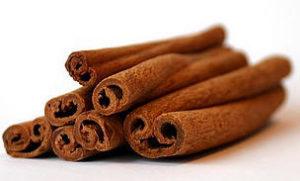

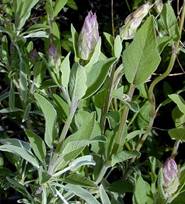
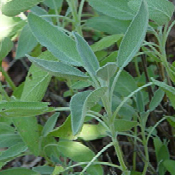 Sage tea, mixed with honey and lemon is excellent for sore throats and colds. You can also gargle with the tea. Add a little apple cider vinegar as a bonus to aid in the healing process. The cooler season is soon upon us so stock up on Respiratory Herbs to ease the stress and uncomfortable symptoms of winter colds and flus. Check out my
Sage tea, mixed with honey and lemon is excellent for sore throats and colds. You can also gargle with the tea. Add a little apple cider vinegar as a bonus to aid in the healing process. The cooler season is soon upon us so stock up on Respiratory Herbs to ease the stress and uncomfortable symptoms of winter colds and flus. Check out my 
